
Joe Garone
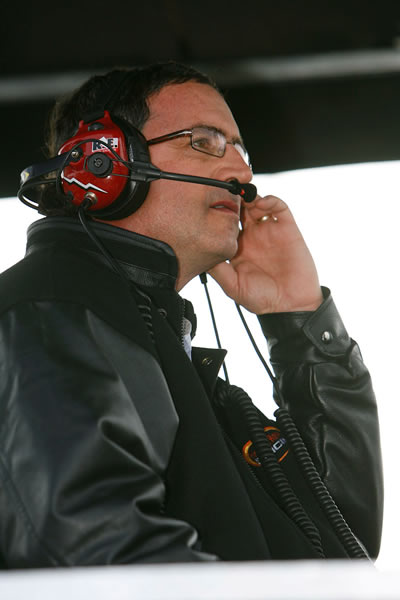 Joe Garone’s rise to the president/general manager position of Denver’s successful NASCAR Sprint Cup team — Furniture Row Racing – started at an early age while accompanying his racing parents to the Colorado short tracks.
Joe Garone’s rise to the president/general manager position of Denver’s successful NASCAR Sprint Cup team — Furniture Row Racing – started at an early age while accompanying his racing parents to the Colorado short tracks.
There is little doubt that his motorsports DNA came from his parents – Joe and Beverly Garone. His father raced for a number of years in the modified series and his mother won several powder puff championships.
It was evident from an early age while growing up in a North Denver racing family that young Joe was destined for a successful motorsports career. At 3-years-old he was already playing with carburetors and automatic transmission valve bodies rather than wooden blocks and toys.
Throughout his youth Garone continued with his motorsports passion. Before embarking on a full-time motorsports career he raced in Colorado for several years while managing his father’s automotive repair shop.
A 1978 graduate of Westminster High School, Garone spent six successful seasons (1989-1994) as crew chief for Arvada, Colo. driver Rick Carelli in NASCAR’s Southwest and Winston West Tour circuits and the Craftsman Truck Series. Garone’s tuning talents played a vital role in Carelli’s success, which totaled more than 100 victories during the six-year period.
In 1995 Garone joined NASCAR’s elite Cup series as a suspension specialist and an over-the-wall front-tire changer for Bill Elliott Racing. He was a member of the 1997 NASCAR pit crew championship team. Garone later advanced to the crew chief role for the legendary Bill Elliott.
After spending four full-time seasons with Bill Elliott Racing (1995-1998), Garone joined PPI Motorsports in May 1999. He played an instrumental role in PPI’s new venture into NASCAR, working as a program manager and crew chief for the team’s two-car Cup effort, which included the No. 32 Tide Ford and the No. 96 McDonald’s Ford.
From 2001 through 2003, Garone worked directly for NASCAR. He was responsible for developing and implementing a business-plan structure for the Research and Development Center in Concord, N.C. as well as hiring the staff and starting the initial safety programs. He was later named NASCAR’s director of officiating.
After spending a year as the director of competition for Michael Waltrip Racing in 2004, Garone returned to his native Colorado where he accepted the position as crew chief for the upstart Furniture Row Racing, owned by Denver businessman Barney Visser.
Garone, who has been the catalyst behind the successful growth of Furniture Row Racing, was promoted to general manager in 2007. His many duties as general manager include overseeing team operations in the various departments, acting as the liaison between the Furniture Row Racing and its partners and directing the growth and development of the overall program.
Under Garone’s guidance Furniture Row Racing in 2013 became the first single-car team to qualify for NASCAR’s Chase playoffs.
Furniture Row Racing is destined for another trip to the Chase when the 2015 playoff format begins in September. The Chase berth was virtually guaranteed when driver Martin Truex Jr. won the Pocono Sprint Cup race in June.
Garone and his wife Leann reside in Denver. They have three daughters – Ashlie, Jordan and Carey and one granddaughter.
Charles “Chuck” Hamann
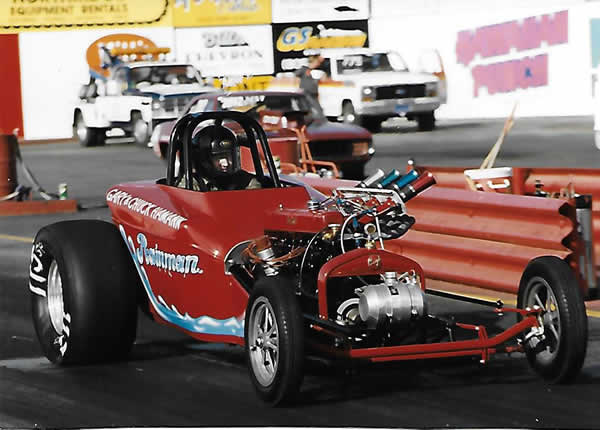 Chuck Hamann’s love of cars began when he started working at his father’s garage at the age of 14. He built his first hot rod, a 1927 Ford Roadster, when he was a senior in high school, and built his first dragster, powered by a Model A engine, in 1959. In 1960, he decided to be really different and put a “straight-eight” Buick engine in the T-Roadster he built. The disadvantage was that there weren’t any after-market parts available, so he built his own manifolds and engine parts. The Buick won the 1961 Wy-Neb-Co Championship, winning more races than any other car in Wyoming, Nebraska and Colorado.
Chuck Hamann’s love of cars began when he started working at his father’s garage at the age of 14. He built his first hot rod, a 1927 Ford Roadster, when he was a senior in high school, and built his first dragster, powered by a Model A engine, in 1959. In 1960, he decided to be really different and put a “straight-eight” Buick engine in the T-Roadster he built. The disadvantage was that there weren’t any after-market parts available, so he built his own manifolds and engine parts. The Buick won the 1961 Wy-Neb-Co Championship, winning more races than any other car in Wyoming, Nebraska and Colorado.
Chuck won the NHRA West Central Division Championship in 1962 with partner Richard Reiber. At the 1962 U.S. Nationals, the Roadster lost high gear on the final race, but still was the National Top Speed Champion. The straight-eight roadster was ranked as one of the “Top Ten Cars” in the United States in 1962 and 1963 by N.H.R.A, and received the “Autolite Award” for top speed of class at the 1962 U. S. Nationals.
The end of the 1963 points season found the Buick-powered D-altered Roadster tied with the Seevers, Weisner and Owens A/Gas Super Charged Willy’s . The National Hot Rod Association decided the championship would be determined by a run-off between the two cars. The “Christmas Tree” starting system was flown in from California for the race in Julesburg, Colorado. The Roadster beat the Willys in the first “Christmas Tree” elimination race in the West Central Division. This was the first time the Roadster received a head start based on national records. Prior to this, the Roadster won over 150 races, including eliminators, in “heads up” races started by a flagman.
Chuck was appointed “Regional Advisor” for the NHRA in 1963, working for many years promoting safe racing and public relations. From 1965 through 1969 he was named the “Top Advisor” in the West Central Division.
Chuck’s next project was a Chevy-powered, home built C-Dragster, which was raced throughout Colorado and Wyoming. It set strip records and won numerous eliminators. Chuck was racing the final round of competition eliminator at Cheyenne, Wyoming drag strip in 1969 against “Taks Toy.” Rain had delayed the race, and after crossing the finish at over 140 miles per hour, the parachute failed and he could not stop on the wet strip. The dragster flipped end over end three times, destroying the car and wreaking havoc with his body.
In 1971, Chuck became one of the first automotive mechanics instructors at Morgan Community College, where he was the prime force in developing the program and curriculum. That year, two of the students he coached won the Colorado State Plymouth Trouble Shooting Contest. This was quite an honor for the students, the school, and Chuck. Chuck was elected president of the Trade and Industrial Education Division of the Colorado Vocational Association, served on the Board of Directors, and was one of two individuals chosen to represent Colorado at the national convention in Dallas, Texas.
Chuck was elected to the Fort Morgan City Council in 1977, and served for four years. In 1981, he was elected to the Northeastern Colorado Council of Governments, and served as vice chairman. In 1985, after a break in public service, he was again re-elected to the City Council and was elected mayor pro-tem.
With racing still in his blood, Chuck and his brother Gary decided to go nostalgia drag racing in 1988. A new, safer 4130 Chrome moly chassis was built for the Buick Roadster, which was then raced from Bakersfield, California to Indianapolis, Indiana. Always the low-budget racer, all of the construction–engine, model t-body and paint–were home built, including the fuel injection.
Chuck retired from racing in 2002, and now resides in Loveland, Colorado with hobbies of silver smithing, oil painting and sculpting.
Joe James, Jr.
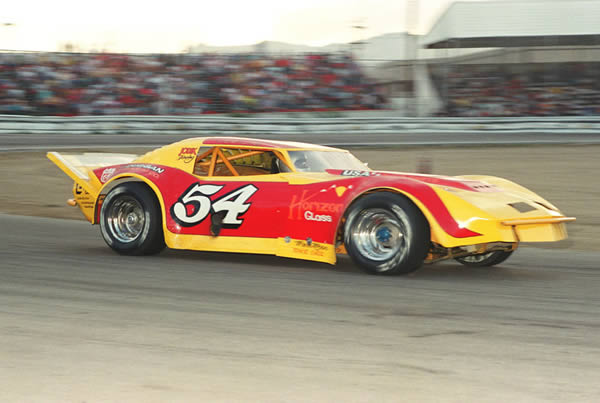 Joe James Jr. was born in Denver in 1949, and began his racing career at Lakeside Speedway, where he won a “Chug” race at age 9. A Chug required one young contestant to steer and another to provide the power to move the hand-built contraption around the track, and Joe won his first trophy as the pilot. It was the start of a long and storied racing career. At age 16, Joe bought a 55 Chevy, built a Corvette motor, and went drag racing at the Erie track, where he won two races. In 1968, his father purchased a modified coupe from Doug Plue. It was painted it in what would become Joe’s signature color–school bus yellow–and the next season he “resumed” his racing career at Lakeside Speedway. He moved from the modifieds to the Late Model division in 1971, and won the first of three Lakeside championships while driving cars he built from the ground up.
Joe James Jr. was born in Denver in 1949, and began his racing career at Lakeside Speedway, where he won a “Chug” race at age 9. A Chug required one young contestant to steer and another to provide the power to move the hand-built contraption around the track, and Joe won his first trophy as the pilot. It was the start of a long and storied racing career. At age 16, Joe bought a 55 Chevy, built a Corvette motor, and went drag racing at the Erie track, where he won two races. In 1968, his father purchased a modified coupe from Doug Plue. It was painted it in what would become Joe’s signature color–school bus yellow–and the next season he “resumed” his racing career at Lakeside Speedway. He moved from the modifieds to the Late Model division in 1971, and won the first of three Lakeside championships while driving cars he built from the ground up.
In 1972, Joe had a vision of how to build new late model, taking the back half of a 57 Chevy frame and welding it to a 69 Camaro front stub. He then added a 69 Camaro body and purchased a motor from Larry Dechant. During the first race for the car in the 1973 season, Joe broke the track record and led every lap of the feature event except the last, when he ran out of gas on turn two. The next week, Joe redeemed himself by again breaking the track record, then won the trophy dash and feature event. He went on to win the 1973 track championship, and was awarded nineteen out of twenty trophies at the CARC Banquette.
In 1986, Joe built a Corvette-bodied late model, which was purchased by Dick Gossett, owner of Bell Surveying and Engineering. Dick’s driver dropped out of racing and left him in a bind. After a strong recommendation from Don Wilson, Dick hired Joe to drive and build his cars. That year Joe won his second track championship at Lakeside Speedway. It was also the beginning of JODIK Racing and a twenty four year friendship that culminated in two track championships and one NASCAR championship under the JODIK logo.
In a career spanning more than forty years, Joe has accumulated numerous wins and has held multiple track records in several racing divisions, as well as four track championships while competing at tracks across the region. At Englewood Speedway, he won the Gum Ball Rally in 1975 and the 1976 Easter Seals Classic. In 1980, Joe won the Budweiser 200 at Colorado Springs International Speedway, beating a number of top local and national competitors. In 1988 he finished second in track championship points and won the Frontier Classic in Cheyenne, Wyoming. In 1994 JODIK Racing teamed with crew chief Don Wilson Jr. and won the NASCAR Winston Racing Series championship at CNS. In 1995 Joe placed second in points for that series. In 1996, Joe won a Feature in the Pro Truck series, and in 2010 he won a Feature in the CARC Mod Coupes series.
Joe’s career wins are too numerous to list, but the trophies he has chosen to display and the multitude packed away speak to his incredible career. During his career Joe was offered two opportunities to move up to the NASCAR Grand National Series, but chose not to uproot his family. During his most successful years as a championship winning driver, sports writer Wendell Bull to named Joe “Denver’s Mario Andretti” in a 1975 Speed Journal article. It wasn’t until the late 90’s that Joe James Jr. was given the name his fans today recognize, “Triple J”, by Colorado National Speedway announcer Mark Moser. Joe James, Jr. has raced his way to becoming one of the more widely recognized and popular drivers in the Rocky Mountain region.
Deloy Naeb
 While growing up in Brighton Colorado, Deloy and Herb Naeb spent countless hours in the auto repair shop operated by their dad, Reinold Naeb, who was also a participant in weekly local dirt track racing events. Deloy and Herb traveled with Reinold to the dirt tracks, and Denver’s Lakeside Speedway was their “home” track. Deloy began racing his own dirt modified in 1952, an effort that led to a sponsorship by Denver’s Viner Chevrolet in a 1955 Chevrolet dirt late model. Saturday night dirt racing usually resulted in Deloy returning home with a trailer full of muddy, broken parts. After several years, Deloy decided to focus his after-hours efforts on the up and coming drag racing scene.
While growing up in Brighton Colorado, Deloy and Herb Naeb spent countless hours in the auto repair shop operated by their dad, Reinold Naeb, who was also a participant in weekly local dirt track racing events. Deloy and Herb traveled with Reinold to the dirt tracks, and Denver’s Lakeside Speedway was their “home” track. Deloy began racing his own dirt modified in 1952, an effort that led to a sponsorship by Denver’s Viner Chevrolet in a 1955 Chevrolet dirt late model. Saturday night dirt racing usually resulted in Deloy returning home with a trailer full of muddy, broken parts. After several years, Deloy decided to focus his after-hours efforts on the up and coming drag racing scene.
Deloy began campaigning a 1955 Chevrolet locally in the C/MP class in the early 60’s. In 1963, he heard of a well abused, wrecked, partially complete 1958 Corvette stored in a shed not far from home, and he purchased the car. Deloy’s best friend, Keith Hitner, then proposed that they name the Corvette “The Pooch”. The Corvette was raced in the C/MP and D/MSP in the 1965 through 1968 racing seasons with few changes, winning the N.H.R.A. World Street Eliminator title in 1966. The car was retired from competition in the late 1960’s, while Deloy owned and operated Rocky Mountain Dragway in Denver, Colorado. The car then accompanied Deloy in his move to Tejeras, NM, where it was sold and stored for 30 years. The car was located, purchased and a complete restoration was finished in 2013.
Some of the “Pooch’s” and Deloy’s notable history include:
- Perennial NHRA division class and street eliminator winner.
- NHRA D/MSP national record holder —- ET 12.69
- NHRA D/MSP national record holder —- MPH 109.94
- First NHRA division 5 car to win one of four annual national events
- Winner of class and Street Eliminator title at the 1965 NHRA Tulsa Invitational meet.
- Winner of class and World Street Eliminator title at the 1966 NHRA World
Championship Finals - Participated in one of the first nationally televised drag racing events with Keith
Jackson, Steve Evans, and Bernie Partridge covering for Peterson Publications. - Received HOT ROD MAGAZINES 1966 TOP TEN racer of the year award.
- Class winner NHRA Pomona Winternationals 1968.
- Numerous national magazine features as well as extensive National Dragster
- Deloy was inducted into the NHRA division 5 Hall of Fame in January, 2014.
- “The Pooch” received the coveted NCRS American Heritage Award for the
preservation of a historically significant piece of Corvette history in July, 2014.
A great friend was lost on November 28, 2014 when Deloy passed away at his home in Tijeras, NM. His outstanding accomplishments and contributions to drag racing are recognized with his induction into the Colorado Motorsports Hall of Fame, class of 2015.
Pat Petrie
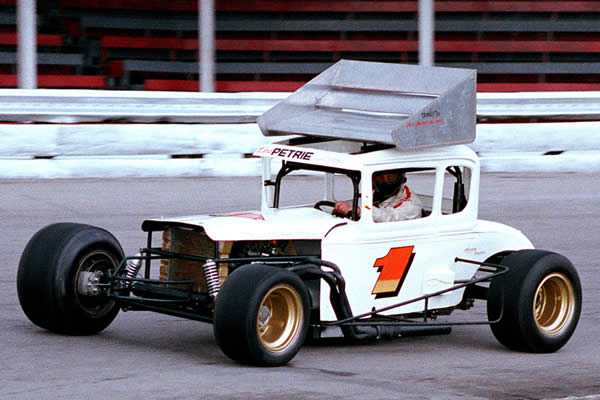 Pat Petrie started going to Lakeside Speedway when he was 8 or 9 years olds to watch his cousins Elmer Sauer, Sam Sauer, and Carolyn Day race. He was “instantly” hooked on racing. Elmer Sauer, who was president of the midget racing club, would sneak Pat into the pits and let him ride around the track in the push trucks. He began his racing career at Englewood Speedway in 1963, where they allowed drivers to race at 18 years old—at Lakeside, the minimum age was 21. The following year, Lakeside changed the minimum age to 18, so Pat moved his racing operation there.
Pat Petrie started going to Lakeside Speedway when he was 8 or 9 years olds to watch his cousins Elmer Sauer, Sam Sauer, and Carolyn Day race. He was “instantly” hooked on racing. Elmer Sauer, who was president of the midget racing club, would sneak Pat into the pits and let him ride around the track in the push trucks. He began his racing career at Englewood Speedway in 1963, where they allowed drivers to race at 18 years old—at Lakeside, the minimum age was 21. The following year, Lakeside changed the minimum age to 18, so Pat moved his racing operation there.
Pat won his first track championship in 1967, driving a Plymouth Valiant in the Compact Division. He followed that with Modified Division championships in 1977 and 1979. Pat raced at numerous tracks in Colorado: Lakeside, Englewood, Century 21, Colorado Springs International, Beacon Hill, and Hayden, as well as traveling to out-of-state races in Cheyenne, Wyoming; Salt Lake City, Utah; and Craig Road Speedway in Las Vegas, Nevada while competing in both Modified and Late Model divisions.
Pat stepped away from driving competitively and moved to Las Vegas in 1984, where he began helping his sons, who were racing at Las Vegas Speedway. In 2000, Pat marked the beginning of “phase two” of his racing career by building a Sportsman Division late model with the help of his son, Joe. That phase of his career was nearly ended in the same year by a near-fatal heart attack, yet he returned to the track in 2001 and won the Championship in his division while another son, Pat, Jr., won the title in his class. It was at this point that Pat chose to retire for good, although he continues to support his sons’ and other young drivers racing efforts any way he can, offering his experience and knowledge to those just starting out in the sport he still loves.
Pat Petrie acknowledges and thanks those who have supportive throughout his career, starting with his father, Sam Petrie, whose guidance was instrumental in Pat’s success, as well as family—wife Kathie, and children Sam, Pat, Jr., Joe, Jim, Donny, and Kathie. He is also thankful to Elmer and Sammy Sauer, as well as Joe Kerpin for teaching him what they knew about building and driving race cars. Pat Petrie passed away in February, 2022
Dave Tansey
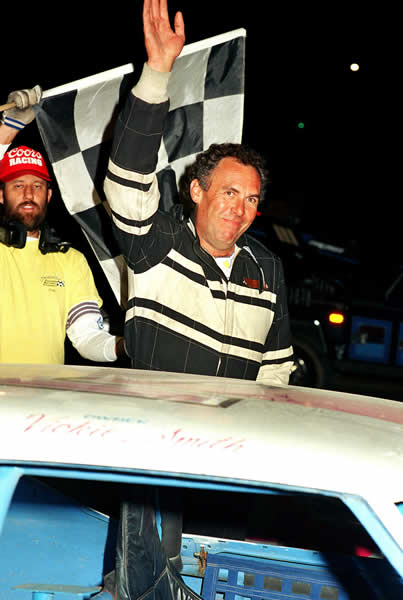 Dave Tansey was born November 1st, 1943 in Newton, Iowa, and moved to Lakewood, Colorado at age twelve. His first experience with racing was going to Lakeside Speedway while he was in his late 20`s. After a next door neighbor invited Dave to the races at Englewood Speedway one night during the first year for Figure-8 racing at the track, Dave knew that driving a Figure-8 car was what he wanted to do; he was hooked.
Dave Tansey was born November 1st, 1943 in Newton, Iowa, and moved to Lakewood, Colorado at age twelve. His first experience with racing was going to Lakeside Speedway while he was in his late 20`s. After a next door neighbor invited Dave to the races at Englewood Speedway one night during the first year for Figure-8 racing at the track, Dave knew that driving a Figure-8 car was what he wanted to do; he was hooked.
After a couple of years of building and driving his own cars, Dave was offered a chance to drive for Tom Eller for one year. Tom kept his car at Baltic Auto, which is where Dave met Darrell Smith. The next season Darrell built two cars: Bobby Jackson drove the # 2 car while Dave drove the # 3 car that was Bobby`s back-up. When Jackson eventually moved to the Late Model division, Dave became the driver of the # 2 car that Jackson had made so popular and famous. Dave drove that car for five seasons, racing on Saturday and Sunday nights, and never finishing out of the top six in Figure-8 division points. In 1976, Dave won six trophy dashes in a row, as well as the most main events for the season.
In 1989, Dave again teamed with Darrel Smith, and together they won the first ever Figure-8 race held on the newly-paved Colorado National Speedway oval, as well as the first championship for the division at the track. Dave retired from racing after winning that championship, but his love for racing did not end. He continues to attend races as a spectator and fan, and remains a well-respected member of the racing community.
During his career, Dave won over 75 races. He is quick to say that he owes his success in racing to great car owners like Tom Eller, Carl Puglise, Butch Orzalac, and most of all, Darrell Smith. Dave also says he owes much to his mentor and great friend, Bobby Jackson, from whom he learned so much about driving a race car.
Steve Troxell
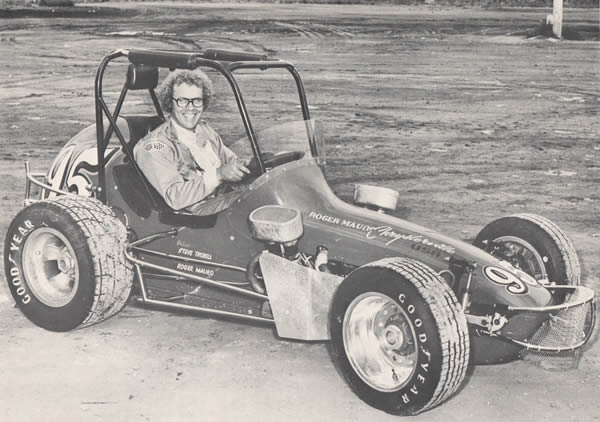 Steve Troxell was born in 1942 in Kansas City, Missouri. He began his racing career in 1963, driving a Solar chassis midget. He won his first main event in 1965 and his first Championship with the Rocky Mountain Midget Racing Association in 1966. He went on to win a second RMMRA title in 1973. Steve is credited with 28 RMMRA wins, which is 17th on the all-time club history win list. Steve competed in Sprint cars, winning the 1974 BCRA National Championship in a team with Glen Slocum that many consider to be one of the best combinations in BCRA history. Steve was inducted into the BCRA Hall of Fame in 2010. While driving for several distinguished car owners, including Harry Conklin and Richard Kaylor, Steve Troxell’s record includes numerous wins, track records, and titles. He is considered to be one of the most competitive and accomplished open-wheel racing drivers to compete in the Rocky Mountain region.
Steve Troxell was born in 1942 in Kansas City, Missouri. He began his racing career in 1963, driving a Solar chassis midget. He won his first main event in 1965 and his first Championship with the Rocky Mountain Midget Racing Association in 1966. He went on to win a second RMMRA title in 1973. Steve is credited with 28 RMMRA wins, which is 17th on the all-time club history win list. Steve competed in Sprint cars, winning the 1974 BCRA National Championship in a team with Glen Slocum that many consider to be one of the best combinations in BCRA history. Steve was inducted into the BCRA Hall of Fame in 2010. While driving for several distinguished car owners, including Harry Conklin and Richard Kaylor, Steve Troxell’s record includes numerous wins, track records, and titles. He is considered to be one of the most competitive and accomplished open-wheel racing drivers to compete in the Rocky Mountain region.
Leonard Vahsholtz
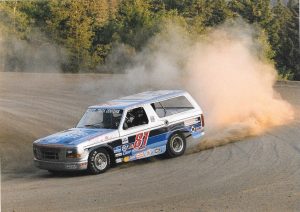 Leonard Vahsholtz is the owner of Vahsholtz Racing, with his wife, Barb. Leonard raced for a record 32 years in the Pikes Peak International Hillclimb, with 18 class wins. In 1993, he won the Stock Car and Truck divisions, while setting course records and winning the Colorado Hill Climb Association points championships in both divisions. Also in 1993, Vahsholtz racing had a “triple double”, with wins and records set in three divisions by two drivers. In addition to Leonard’s Stock Car and Truck class wins and records, the Open Pro Motorcycle division was won by son Clint Vahsholtz. Since Pikes Peak has since passed a rule that drivers can only complete in one class, this record should last forever. Leonard retired from racing in 2008 from a career that includes competing in 142 Hillclimbs with 100 wins, but has continued as a car owner. As of 2015, the Vahsholtz racing family has a remarkable record of 42 wins on Pikes Peak, and has won one or more classes on “the Hill” every year since 1993.
Leonard Vahsholtz is the owner of Vahsholtz Racing, with his wife, Barb. Leonard raced for a record 32 years in the Pikes Peak International Hillclimb, with 18 class wins. In 1993, he won the Stock Car and Truck divisions, while setting course records and winning the Colorado Hill Climb Association points championships in both divisions. Also in 1993, Vahsholtz racing had a “triple double”, with wins and records set in three divisions by two drivers. In addition to Leonard’s Stock Car and Truck class wins and records, the Open Pro Motorcycle division was won by son Clint Vahsholtz. Since Pikes Peak has since passed a rule that drivers can only complete in one class, this record should last forever. Leonard retired from racing in 2008 from a career that includes competing in 142 Hillclimbs with 100 wins, but has continued as a car owner. As of 2015, the Vahsholtz racing family has a remarkable record of 42 wins on Pikes Peak, and has won one or more classes on “the Hill” every year since 1993.
Butch Hardman
 Butch Hardman began his racing career in 1959, when he was involved with drag racing, as well as midgets and sprint cars, at various tracks. In 1966, he competed in his first Pikes Peak Hillclimb, driving a lengthened sprint car in the Champ Car division. He has since participated in 36 Pikes Peak Hillclimb races, competing in Champ Car, Stock Car, and Open Wheel divisions. He is one of a select few drivers to race to the summit, return by helicopter to the starting line and race a second car to the top to receive the checkered flag in two divisions. In 1987, he repeated the feat in the Grand Junction Lands End Hillclimb. Butch participated in the Colorado Hill Climb Association from 1971 to 2009, building four championship division cars, all of which have won races, set records and captured championships in the CHCA. His love is not only to drive, but also build safe and fast cars. While winning 23 championships and setting 20 records in various hill climb courses, he has been helpful to many competitors in all aspects of racing. Since 2006, he has helped his son, Brian, compete in Hillclimb and Sprint Car racing. Butch Hardman’s outstanding career represents a high point in Colorado Motorsports history.
Butch Hardman began his racing career in 1959, when he was involved with drag racing, as well as midgets and sprint cars, at various tracks. In 1966, he competed in his first Pikes Peak Hillclimb, driving a lengthened sprint car in the Champ Car division. He has since participated in 36 Pikes Peak Hillclimb races, competing in Champ Car, Stock Car, and Open Wheel divisions. He is one of a select few drivers to race to the summit, return by helicopter to the starting line and race a second car to the top to receive the checkered flag in two divisions. In 1987, he repeated the feat in the Grand Junction Lands End Hillclimb. Butch participated in the Colorado Hill Climb Association from 1971 to 2009, building four championship division cars, all of which have won races, set records and captured championships in the CHCA. His love is not only to drive, but also build safe and fast cars. While winning 23 championships and setting 20 records in various hill climb courses, he has been helpful to many competitors in all aspects of racing. Since 2006, he has helped his son, Brian, compete in Hillclimb and Sprint Car racing. Butch Hardman’s outstanding career represents a high point in Colorado Motorsports history.
Ron Schleiger
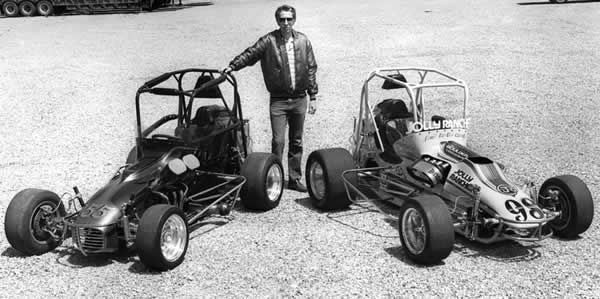 Colorado native Ron Schleiger attended his first race a young age. In his own words, “My passion for auto racing started when I was six or seven years old. My dad took me to Speedway Park, a track, a north of Fort Collins, for the midget races. From the minute I saw the first racer come out of the pits, I was hooked. The beautiful cars, the sound, speed and alky fumes, it don’t get any better”. As Ron grew into his teens, he became more involved with car culture, buying all of the Rodding and Racing magazines he could find. He heard his older brother talk about midget racing at Lakeside Speedway, and begged to go along to watch the action there. Lakeside became his favorite track (“with its atmosphere and history, it’s hard to beat”). A job in highway construction provided funds and an unexpected resource for the acquisition of Ron’s first race car. Also working in the construction trade was Denver racer Tommy Rice, who advised young Ron on which cars might be available for purchase, A deal was struck to purchase Earl Zeal’s Kurtis V-8/60 midget. “We bought it, painted it light yellow, hauled it to Lakeside, joined the RMMRA, and we were on our way. This was 1962. We ran the car for a few years and had some success winning B-Dashes, heat races and semi-mains”. The Kurtis midget gave way to a USAC midget powered by a Chevy II engine, and in the mid-190-70’s, Ron quit his job to work on race cars fulltime. He eventually fulfilled a long-time aspiration and began to design and build his own race cars.
Colorado native Ron Schleiger attended his first race a young age. In his own words, “My passion for auto racing started when I was six or seven years old. My dad took me to Speedway Park, a track, a north of Fort Collins, for the midget races. From the minute I saw the first racer come out of the pits, I was hooked. The beautiful cars, the sound, speed and alky fumes, it don’t get any better”. As Ron grew into his teens, he became more involved with car culture, buying all of the Rodding and Racing magazines he could find. He heard his older brother talk about midget racing at Lakeside Speedway, and begged to go along to watch the action there. Lakeside became his favorite track (“with its atmosphere and history, it’s hard to beat”). A job in highway construction provided funds and an unexpected resource for the acquisition of Ron’s first race car. Also working in the construction trade was Denver racer Tommy Rice, who advised young Ron on which cars might be available for purchase, A deal was struck to purchase Earl Zeal’s Kurtis V-8/60 midget. “We bought it, painted it light yellow, hauled it to Lakeside, joined the RMMRA, and we were on our way. This was 1962. We ran the car for a few years and had some success winning B-Dashes, heat races and semi-mains”. The Kurtis midget gave way to a USAC midget powered by a Chevy II engine, and in the mid-190-70’s, Ron quit his job to work on race cars fulltime. He eventually fulfilled a long-time aspiration and began to design and build his own race cars.
In Ron’s estimation, a turning point came in the summer of 1976, when driver Mike Gregg started in the last row of a USAC feature at Colorado National Speedway in one of Ron’s cars. He finished third, and the two began a long and illustrious collaboration. In the winter of 1976-77, car owner Hank Hersh contracted Ron to design and build a complete car to run during the 1977 season. With Mike Gregg at the wheel, Ron’s Hersh-sponspored cars won six consecutive RMMRA championships, starting with the 1977 season, followed by two more titles from 1984-87. The team also did well outside of Colorado, winning the Western States Nationals in Phoenix, races on ESPN Thunder, and the Belleville Midget Nationals, among many others. Over a long career as a race car designer and fabricator, Ron built a variety of well-constructed and competitive cars that were successful on both regional and national levels of oval-track racing. His cars were driven by dozens of drivers to multiple track and national championships. Drivers who piloted Ron’s cars include Joe Lehman, Tom Frantz, Leo Tucker, Rick Montgomery, and of course, Mike Gregg. Ron states, “Other cars and drivers were very competitive and in the top ten in points for quite a few years in my cars. I am not sure how many cars I built of how many racers they won. However, I was very busy building quarter midgets, mini sprints, midgets, sprint cars, Silver Crown cars, and a ton of hot rods. I made parts for restored WWII airplanes and restored race cars, and countless repair jobs. Best of all, I met a lot of good and interesting people, and became lifelong friends with most of them”.
Rod Schleiger has been Colorado’s most accomplished race car builder over multiple decades of precise, top-quality fabrication work. His Hall of Fame induction recognizes the innovative designs and building skills that resulted in machines capable of winning every time they hit the track.
Pete Brandenburg
 Pete Brandenburg has been chosen to receive the 2015 Jerry Van Dyke Award, which is given in recognition of lifelong dedication to Colorado Motorsports by an individual. Pete began racing at Lakeside Speedway at age 21, and over the course of his racing career he was competitive in figure eights, modifieds, late models and midgets. His award acknowledges his dedicated involvement in racing organizations and clubs. He has been on the Englewood Racing Association Board of Directors, RMMRA Board of Directors, and the Colorado Motorsports Hall of Fame board of directors. He also has been recognized with lifetime memberships in the Arapahoe Racing Association and Englewood Racing Association. Through his sign-painting business, Pete has provided banners, signs, decals and other promotional tools to the organizations and clubs of which he has been a part. Pete has been an energetic and active member of the racing community for decades.
Pete Brandenburg has been chosen to receive the 2015 Jerry Van Dyke Award, which is given in recognition of lifelong dedication to Colorado Motorsports by an individual. Pete began racing at Lakeside Speedway at age 21, and over the course of his racing career he was competitive in figure eights, modifieds, late models and midgets. His award acknowledges his dedicated involvement in racing organizations and clubs. He has been on the Englewood Racing Association Board of Directors, RMMRA Board of Directors, and the Colorado Motorsports Hall of Fame board of directors. He also has been recognized with lifetime memberships in the Arapahoe Racing Association and Englewood Racing Association. Through his sign-painting business, Pete has provided banners, signs, decals and other promotional tools to the organizations and clubs of which he has been a part. Pete has been an energetic and active member of the racing community for decades.
As 2015 Jerry Van Dyke Award recipient , Rob Johnson, said: “Pete and Jerry Van Dyke played an enormous role in creating the CMHOF, and then finding a way to kick start it again 20 years ago. We wouldn’t have the country’s premier state motorsports hall of fame if it weren’t for dedicated folks like Pete. I loved his passion for motorsports and our country. We should be proud to carry on the legacy that these guys created. ” Pete Brandenberg passed away on February 1, 2018.
Rob Johnson
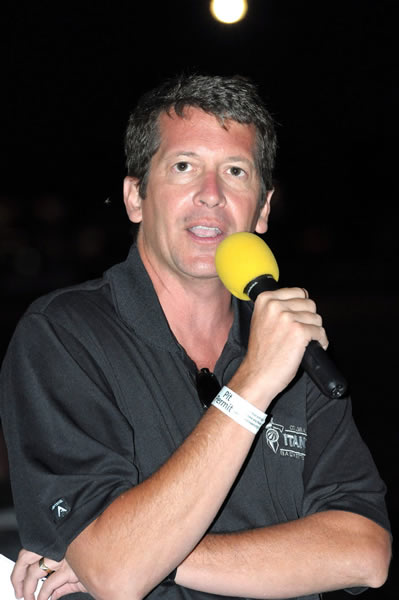 A Colorado native, Rob Johnson has spent much of his 25+ year professional career in sports management positions up and down the Front Range of the Rockies.
A Colorado native, Rob Johnson has spent much of his 25+ year professional career in sports management positions up and down the Front Range of the Rockies.
After graduating from the University of Colorado with a journalism degree in 1990, he ventured to Kansas City to work for a leading advertising and public relations firm, Barkley & Evergreen Advertising, on motorsports and finance accounts. There, he managed public relations and advertising projects on behalf of Purolator Filters, Western Auto and AE Clevite Engine Parts. Upon returning to his hometown in 1994, he helped with the start-up of several marketing firms, ultimately becoming the manager of the public relations division of the Denver-based strategic marketing firm of Greenberg Baron Simon & Miller. There he worked for such clients as Pepsi Center, Colorado Avalanche, MLB’s ’98 All-Star Game at Coors Field, and Turner Sports’ Atlanta Arena, and as one of the initial strategic marketing and public relations consultants on Pikes Peak International Raceway, a 1,200-acre, 42,000-seat complex built in 1996 in Fountain, Colorado.
In November 1998, Rob was named president of Pikes Peak International Raceway where for eight years he oversaw a major motorsports calendar, including NASCAR, IndyCar, AMA and USAC and more than 100 days of additional track rental activities. In 2006, he became general manager of the Grand Prix of Denver, a Champ Car street race held on the streets of Denver. He was also named vice president of Sutton International Motorsports, where he managed sales, marketing and public relations initiatives for the organization’s NASCAR, Baja and Champ Car projects. In addition, Rob has served as the race director for the Shell Eco-Marathon for the past eight years. In this role, he oversees a fuel mileage competition of more than 150 high school and college teams from around the world. The event is currently held on the streets of Detroit. He has also managed the event in California and Texas.
Outside of racing, Rob is currently the chief executive officer of the Billiard Congress of America, a non-profit trade organization dedicated to promoting the game of billiards though educational, marketing and promotional efforts, annual industry trade shows, tournaments and other programs designed to encourage play. He is also the managing director of a non-profit association and conference management firm. Rob has also been actively involved in the community, having served on the board of directors for 10 years, including six as chairman of the board, of the Colorado Motorsports Hall of Fame. He has also served on the board of directors for the Pikes Peak International Hill Climb, University of Colorado Alumni Association, Fort Carson Educational Museum and University of Colorado at Colorado Springs Chancellor’s Leadership Class. Rob is the recipient of the 2015 Jerry Van Dyke Memorial Award.
Rob, his wife, Kari, and their three boys live in Superior, Colo.
